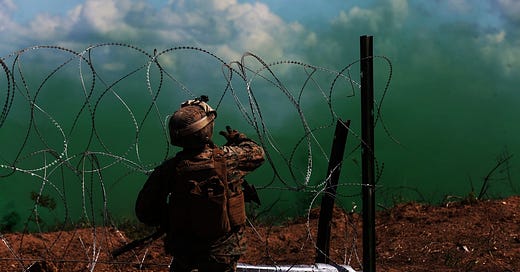Editor’s Note: This article was originally published by the Infantry Working Group. You can create an account and access their articles and products, which focus on techniques, procedures, and tactics - to include captured best practices from the operating forces.
Scope
Smoke techniques when breaching during a platoon attack. The combat engineer fireteam attached to the infantry platoon is in scope. Smoke rounds from the MAAWs rocket are out of scope.
Observations
During the platoon attack, infantry platoons—with attached combat engineers—breach enemy obstacles. The fundamentals suppress, obscure, secure, reduce and assault (SOSRA) guide breaching actions. During a breach, smoke prevents enemy observation of the breach element.
Infantry platoons—with attached combat engineers—obscure ineffectively. They:
Are not organized to breach. When there is little infantry-engineer coordination, the breaching element obscures. Support elements—tasked with suppression—do not obscure.
Ineffectively obscure a breach. The breaching element relies on ‘hand smoke’ grenades—limited to throwing distance—close to the breach. ‘Hand smoke’ by itself marks the breach location for the enemy. Close to the breach, ‘hand smoke’ blinds engineers in the breach element—not the enemy! Marines cannot throw ‘hand far enough!
Use an inadequate volume of smoke. Smoke volume isn’t maintained—smoke only works for a finite time. Smoke isn’t massed—grenades aren’t used in volume to obscure. Smoke doesn’t cover an enemy position.
Techniques to Obscure
ORGANIZE to smoke. Successful breaches suppress and obscure. ASSIGN engineers to the breach and support elements. The support element leader oversees suppression and obscuration. Armed with grenade launchers, engineers shoot 40mm smoke on enemy positions.
SMOKE enemy positions - not friendly. Smoke enemy positions with mortars, grenade launchers, and hand smoke. Use as many systems as possible. Shoot smoke at firing apertures. During a lull in suppression, the enemy—looking up from behind cover—sees only a wall of smoke. Make wind calls so smoke drifts on enemy positions. Shoot at or in front of enemy positions. Smoke behind enemy positions does nothing. Smoke in front still obscures. 40mm smoke is prone to "skipping" particularly at closer ranges.
MASS smoke. Establish and maintain smoke. Establish obscuration with two, three-round ‘smoke missions’ with an M32A1 grenade launcher. Maintain obscuration by shooting two smoke rounds every thirty seconds. Supplement grenade-launched smoke with hand-smoke. Throw multiple ‘hand smoke’ grenades every minute to maintain obscuration and cover billowing times. Deceive by smoking other areas along enemy protective wire.
Notes for Leaders
Engineer manuals lack techniques, procedures and best practices for the engineer fireteam attached to an infantry platoon. Breaching techniques in support of a platoon attack are tribal knowledge, perpetuated outside of our manuals. Combat engineers are equipped with 40mm grenade launchers but rarely draw them from the armory. Equip the breach element with M320s to supplement support element smoke. The M320 as an individual weapon is NOT effective for smoke obscuration. Two coordinated M320s can obscure. Limited by personnel, equipment, or ammunition leaders prioritize suppression to support a breach. In some training venues, Marines can’t shoot when a target is obscured. Train obscuration by offsetting smoke from targets, or by discussion of breaching actions. Training scars can not prevent best practices.
Reference: MCTP 3-34A Combined Arms Mobility. HQMC. June 2022
Contributors include Ryan Bartholomew, Tyler Craven, Harley Freeborn, Tyler Martin, Sean O’Neill, Will Sears, Ryan Snell, and Chad Skaggs. GySgt Skaggs can be reached at skaggs.chad@gmail.com. Please visit https://www.infantryworkinggroup.org/ to review more of their work.





